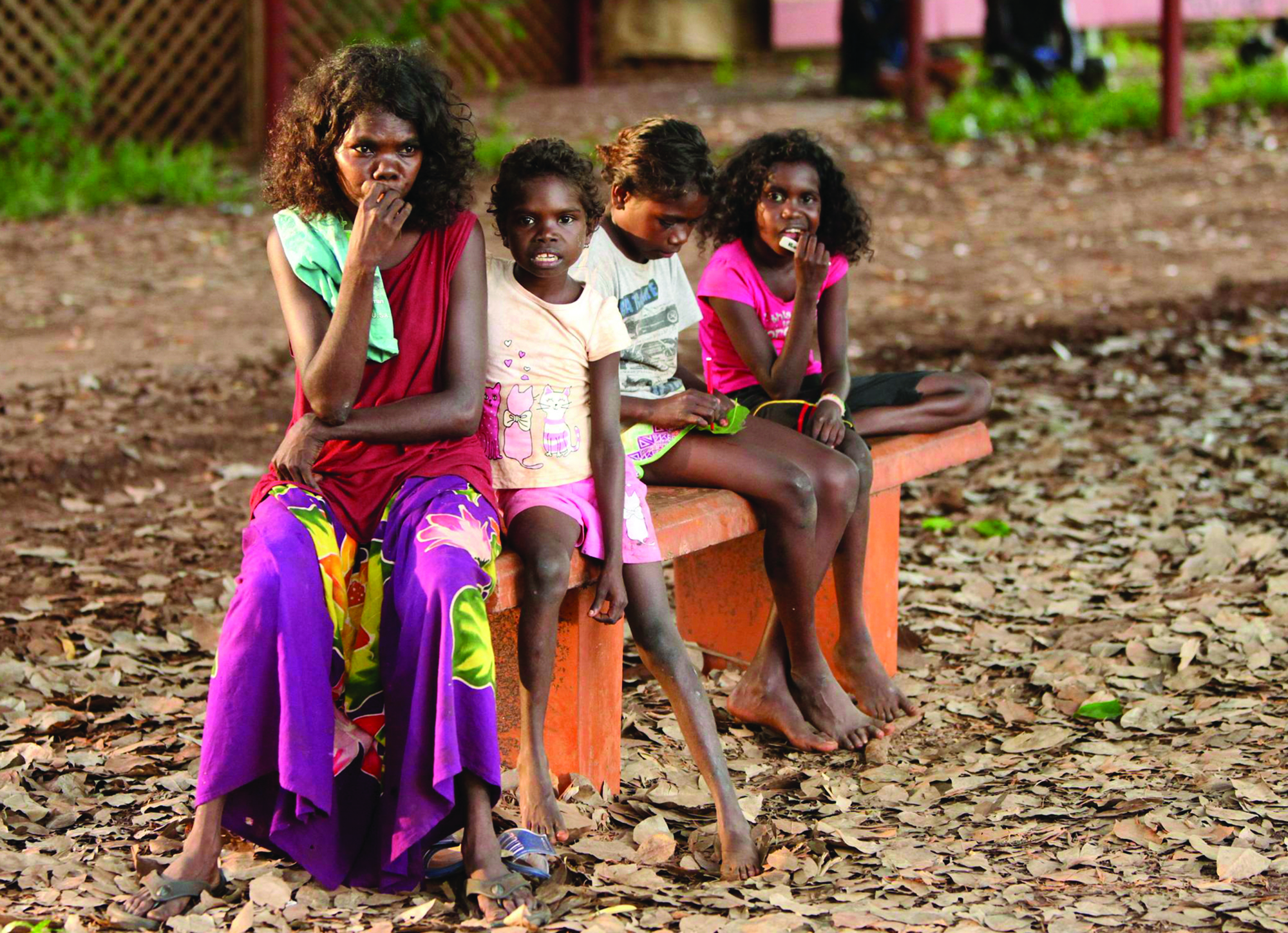One of the most potent images in Charlie’s Country, which premiered at the Adelaide Film Festival in 2013, is of its star David Gulpilil staring directly into the camera from behind prison bars. This breaking of the fourth wall is hugely significant. The film’s director, Rolf de Heer, had travelled to Darwin a year earlier to visit Gulpilil, who was serving a sentence for aggravated assault; under the influence of alcohol, he had thrown a broom at his wife and broken her arm. At a hearing prior to his sentencing, Gulpilil had stood outside the courthouse, and expressed his desire to stop drinking and to make another film.[1]‘Gulpilil Jailed for Breaking Wife’s Arm’, ABC News, 22 September 2011, <http://www.abc.net.au/news/2011-09-22/gulpilil-sentenced-to-12-months-jail/2911604>, accessed 10 January 2015. Only a few years later, he would win Best Actor in the Un Certain Regard category at the Cannes Film Festival as well as at the AACTA Awards.
Molly Reynolds’ Still Our Country – Reflections on a Culture (2014) is a companion piece to Charlie’s Country, which depicts what Gulpilil has called his ‘life story’ of addiction, culture and displacement.[2]Garry Maddox, ‘Charlie’s Country Takes David Gulpilil from Prison to International Acclaim’, The Sydney Morning Herald, 4 July 2014, <http://www.smh.com.au/entertainment/movies/charlies-country-takes-david-gulpilil-from-prison-to-international-acclaim-20140708-zswba.html>, accessed 10 January 2015. Reynolds’ film is very different – both in content and in tone – but is similarly concerned. A loosely constructed documentary that moulds ideas around images and interviews, Still Our Country is the thematic aerial shot to the close-up intimacy of de Heer’s film.
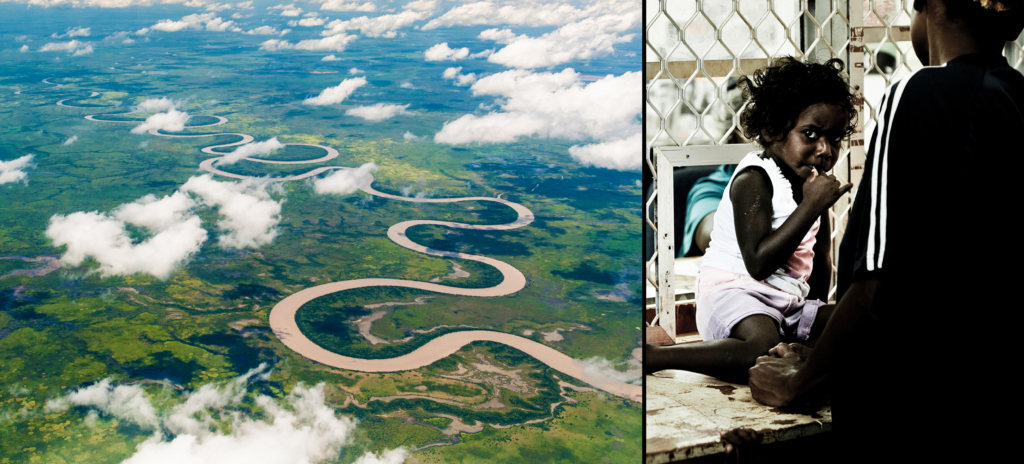
Just as Charlie’s Country was filmed around Ramingining in Arnhem Land, Reynolds has focused her film on the community, which is 560 kilometres east of Darwin on the edge of the Arafura Swamp. It’s another entry in a line of works made in relation to the region, with Still Our Country embodying the second instalment in what de Heer and Reynolds have dubbed their ‘country suite’.[3]Sandy George, ‘The Intervention Underpins Rolf de Heer’s Charlie’s Country’, SBS Movies, 18 July 2014, <http://www.sbs.com.au/movies/article/2014/07/18/intervention-underpins-rolf-de-heer-s-charlie-s-country>, accessed 10 January 2015. Reynolds has been working with de Heer for some years now, having collaborated with him on The Balanda and the Bark Canoes (which they co-directed with Tania Nehme, 2006) – a making-of documentary about de Heer’s distinguished Ten Canoes (2006) – and on the multiplatform series of short films Twelve Canoes (2008).[4]See ‘Twelve Canoes’, Ronin Films website, <http://www.roninfilms.com.au/feature/806/twelve-canoes.html>, accessed 15 January 2015. Reynolds’ authorship here is significant. Her ongoing artistic relationship to – and familiarity with – the Yolngu people feels woven into Still Our Country, which at times possesses an intimacy that a less-immersed filmmaker might not have achieved. It’s a film born of the desire to share knowledge of a community that very few white Australians will ever see firsthand.
Whereas Reynolds’ forthcoming Another Country – the third instalment in the country suite – is reportedly a more conventionally constructed documentary to be narrated by Gulpilil,[5]George, op. cit. Still Our Country is a far more sensory, experiential film. As its full title implies, it is broad in both scope and execution. Reynolds layers images over one another, strings bursts of photographs together through rapid dissolves to suggest movement, and uses split-screen for contrast. These techniques make up the bulk of the film, with video footage comprising slightly less of its entire eighty-eight minutes. Occasionally, this approach has the feel of a scrapbook or photo album, and it becomes clear that Still Our Country has a mnemonic quality. The slight shifts between photographs are like snippets of memory, moving but incomplete, capturing moments rather than scenes. It gives the people depicted a participatory quality, as though they are contributing a part of themselves to the quilt of the film. In turn, though, Still Our Country is at times reminiscent of a PowerPoint presentation – not a negative trait, necessarily, but it has a somewhat un-cinematic quality that can make the film difficult to engage with.
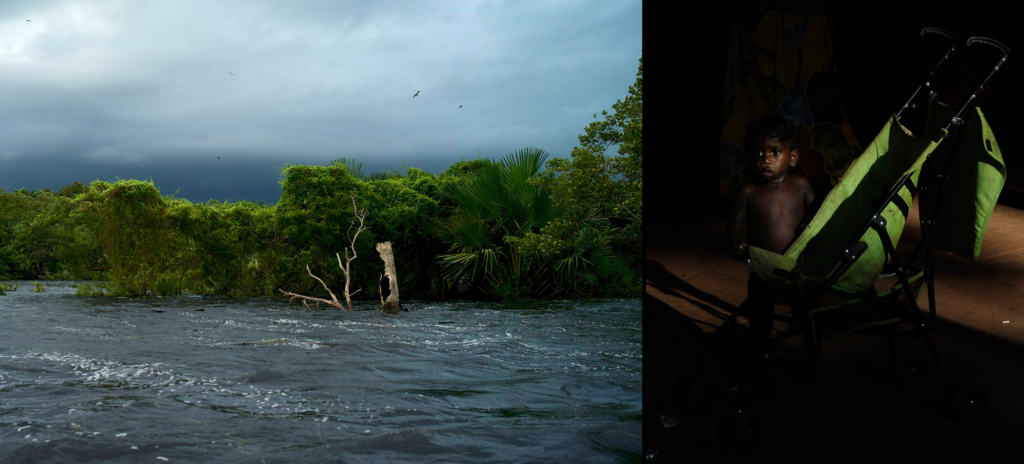
The way Reynolds has composed Still Our Country’s imagery is, however, rarely less than thoughtful. Most of the employed juxtapositions examine the Yolngu people’s ongoing relationship with the land. One of the most pointed examples relates to food and diet: Reynolds places a woman’s hands as she makes bread alongside a cycle of photos of shopping trollies, children in stores, and money tins. A few minutes prior, a man holds up a packaged loaf of bread and proclaims, ‘This is what I don’t like to eat: bread.’ He pauses. ‘But I do. These days, yeah.’ Another shot shows pallets of processed white sugar; here, the film is pointing towards the vast dietary shifts that Indigenous people have undergone. Soon after, a pair of hands holding nuts transitions into a stack of boxes of Coca-Cola. Reynolds doesn’t need to cite statistics – Aboriginal and Torres Strait Islander people are three times more likely to have diabetes and seven times more likely to die from it,[6]Australian Institute of Health and Welfare, ‘Populations of Interest’, Diabetes, <http://www.aihw.gov.au/diabetes/populations-of-interest/>, accessed 20 January 2015. for example – because, just in images, the point is duly made.
While Still Our Country takes this interpretive approach, it’s also open in its didacticism. A man speaks of cultural exchange,
saying, ‘You learn from me, I learn from you.’
While Still Our Country takes this interpretive approach, it’s also open in its didacticism. A man speaks of cultural exchange, saying, ‘You learn from me, I learn from you. That’s the important part of life […] so we know each other’s cultures.’ This may as well double as Reynolds’ mission statement, as if to say, This is what I’ve learned, and how I’ve learned it. Now I’m passing it on. This informative method, though, is very much dependent on the viewer. Because Still Our Country is atypically abstract in its approach to documentary form – what Bill Nichols has called the ‘poetic mode’[7]The poetic mode of documentary ‘sacrifices the conventions of continuity editing and the sense of a very specific location in time and place that follows from it to explore associations and patterns that involve temporal rhythms and spatial juxtapositions’; see Bill Nichols, Introduction to Documentary, 2nd edn, Indiana University Press, Bloomington, 2010, p. 162. – it requires thorough engagement and analysis of its ideas. This makes it an ideal learning tool as it encapsulates history past and present, such as in the sequence that follows a man shouting through a megaphone: ‘Our children are hungry! Open the store!’ Here, the film makes rare use of archival material, showing the opening of the store, but also presenting it in a quite negative way: Reynolds and editors Nehme and Mark Eland have intercut these scenes with fuzzy static, and sound designers James Currie, Tom Heuzenroeder and Josh Williams have inserted ominous electronic and metallic buzzing. While these choices are interesting, the intent is less clear; these effects are sinisterly reminiscent of security footage, which might suggest control or placation – a superficial gesture that both reinforces and ignores the systemic.
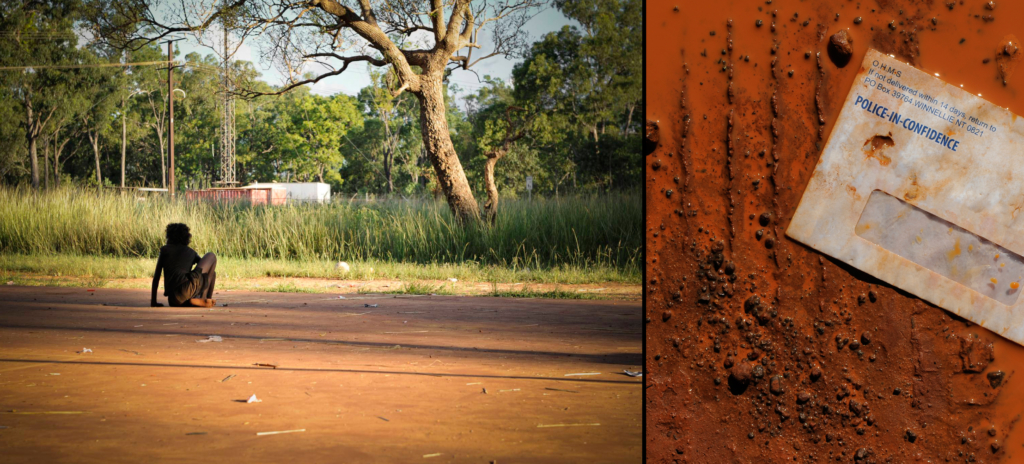
The footage is also accompanied by a voiceover of a man speaking about passing responsibility for the store – and, by extension, commerce – to Aboriginal people. The film seems to suggest that the establishment of this store, maybe even the very concept of it, stems from a place of paternalism, or perhaps that trust hasn’t truly been placed in the people of Ramingining to ‘manage their affairs’. It’s one of Still Our Country’s more oblique moments – the point Reynolds is trying to make is either intentionally vague, or compromised by the film’s stylisation. The film is seemingly divided into short chapters, marked by fade-to-black transitions, which occasionally stymies Still Our Country’s momentum or hinders its broader thematic concerns. After the store sequence, Reynolds devotes a few minutes to showing some Yolngu youth at play, dancing and playing basketball. Immediately after, the film fades in to a man speaking about the Northern Territory intervention. He says he doesn’t know what the word intervention means or who the intervention is for, and it immediately feels like an idea better presented in conjunction with the archival footage.
Still Our Country’s alternation of the personal and the political suggests the disjointedness of life in the region as well as the way the vibrancy of the culture on which the film reflects butts up against the Yolngu’s frustrations about having their culture mediated by forces beyond their control.
Reynolds goes on to contrast images of tents and people’s makeshift homes with housing being built, illustrating the major accommodation shortages that plague communities such as Ramingining. A sign boasts of how the area received recognition from the state’s Territory Tidy Towns initiative in 1998, further underscoring how a lot, and how very little, can change over time. In that sense, Still Our Country’s alternation of the personal and the political suggests the disjointedness of life in the region as well as the way the vibrancy of the culture on which the film reflects butts up against the Yolngu’s frustrations about having their culture mediated by forces beyond their control. This is underscored as Reynolds illustrates some of those forces, from the lack of jobs – a man describes in voiceover how, in the 1960s, everyone he knew had jobs – to the resultant presence of welfare in many people’s lives. She also quietly observes the presence of restrictions on alcohol and pornography, showing a sign emblazoned with the inordinate fines faced for possession of either. The image of the sign is pointedly covered over with another bearing the words ‘Surveillance cameras in use’ as the sound of a helicopter suffuses the sequence.
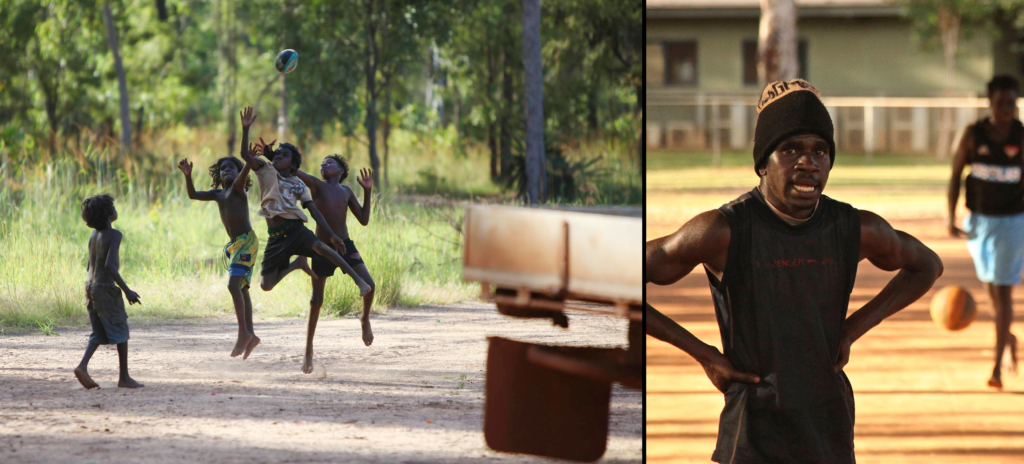
Still Our Country makes blunt but powerful use of sound in this manner throughout, from the omnipresent buzz of insects to the industrial rumble of trucks and the crackle of fire. The music, composed by Joff Bush, Ack Kinmonth and Graham Tardif, is usually ambient and often haunting, but is counterbalanced by songs or dance or sport, often contrasted with older traditions to show the generational evolution of cultural expression.
The film Reynolds has crafted is fascinatingly shapeshifting. It feels fairly loosely tied to Charlie’s Country, chiefly evoking place and a similar ideological tone. And it’s possible that Still Our Country will ultimately work best when the companion documentary Another Country is complete; this more free-ranging film may ultimately function as context and groundwork for a more polemically geared view of the situation in Arnhem Land. But it’s nevertheless a vital contribution to the ongoing documentation of contemporary Indigenous life. Last year alone saw a number of nonfiction approaches to Aboriginal subjects, including The Redfern Story (Darlene Johnson), In Between Songs (Joshua Bell) and 88 (Adrian Russell Wills).
Another two are particularly notable in their contrast with Still Our Country. The first is Black Panther Woman (Rachel Perkins, 2014), a powerful look at the life of Marlene Cummins, who was a member of the short-lived Black Panther movement founded in Queensland in the early 1970s. Cummins’ story, in many ways, parallels Gulpilil’s – she is an artist and important community figure beset by struggles with addiction and a difficult past. But Perkins has stipulated that Black Panther Woman is ‘intended first and foremost for an Aboriginal audience’,[8]Rachel Perkins, paraphrased in Julia Scott-Stevenson, ‘Struggling with Silence: Rachel Perkins’ Black Panther Woman’, Metro, no. 183, Summer 2015, p. 87. a distinction Still Our Country arguably doesn’t share. Whereas Perkins is Aboriginal, Reynolds is not, and her film is presented in a way that evidences her status as an outsider passing on what she has learned about and from her subjects. On the other hand, Utopia (John Pilger, 2013) takes a more polemical, pseudo-journalistic approach, casting its eye over the vast landscape of injustices inflicted on Indigenous people. Pilger’s film was mostly well received, but was also criticised for stoking moral outrage rather than exploring the root causes of issues affecting Aboriginal communities.[9]See, for example, Julie Rigg, ‘John Pilger’s Utopia: Moral Outrage Is Not Enough’, ABC Arts, 10 April 2014, <http://www.abc.net.au/arts/blog/Julie-Rigg/JohnPilgers-Utopia-moral-outrage-not-enough-opinion-140410/default.htm>, accessed 27 January 2015.
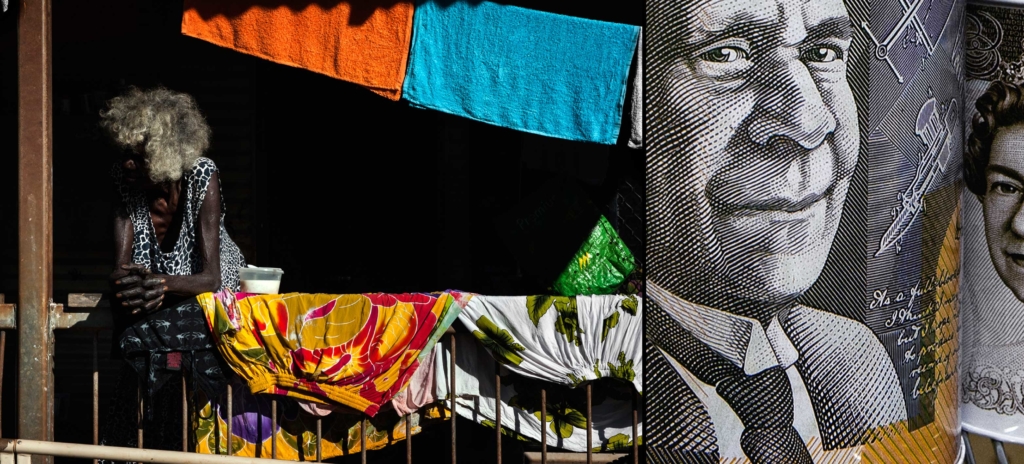
But why these films, and why now? It’s certain, at least, that they are a product of frustration. It’s impossible to deny the fraught and greatly disadvantaged state of Indigenous Australia, and, as years wear on and so little progress is made, it’s understandable that the artistic response would become more vocal and prolific. What’s most significant about this spate of inherently activist documentaries, which are everything from aggrieved to celebratory, is the range of voices and perspectives they offer to the national conversation on Indigenous affairs. They are almost uniformly interested predominantly in providing a platform for Indigenous voices (Utopia perhaps being the exception). In conjunction with the great ongoing work being done on the small screen by NITV, this platform may be more raised than ever.[10]It should be noted that recent cuts to arts and ABC funding by the federal government are likely to have a negative impact on this. Hopefully, documentarians will not be deterred.
What Still Our Country – Reflections on a Culture particularly offers us, which is so important, is exchange. The titular culture on which it seeks to reflect is not solely that of the Yolngu of Ramingining in Arnhem Land, but also that of Anglo-centric white Australia, which is in many ways defined by its separation from – and disparity with – the cultures of First Nations peoples. Reynolds’ use of compellingly diverse techniques to aestheticise her presentation of Ramingining and its inhabitants makes Still Our Country an involving documentary brimming with thematic possibilities. Most importantly, it invites the viewer’s engagement and analysis, making it both educational and conversational at a time when the need to ‘know each other’s cultures’ is more important than ever.
http://www.stillourcountry.com.au
Endnotes
| 1 | ‘Gulpilil Jailed for Breaking Wife’s Arm’, ABC News, 22 September 2011, <http://www.abc.net.au/news/2011-09-22/gulpilil-sentenced-to-12-months-jail/2911604>, accessed 10 January 2015. |
|---|---|
| 2 | Garry Maddox, ‘Charlie’s Country Takes David Gulpilil from Prison to International Acclaim’, The Sydney Morning Herald, 4 July 2014, <http://www.smh.com.au/entertainment/movies/charlies-country-takes-david-gulpilil-from-prison-to-international-acclaim-20140708-zswba.html>, accessed 10 January 2015. |
| 3 | Sandy George, ‘The Intervention Underpins Rolf de Heer’s Charlie’s Country’, SBS Movies, 18 July 2014, <http://www.sbs.com.au/movies/article/2014/07/18/intervention-underpins-rolf-de-heer-s-charlie-s-country>, accessed 10 January 2015. |
| 4 | See ‘Twelve Canoes’, Ronin Films website, <http://www.roninfilms.com.au/feature/806/twelve-canoes.html>, accessed 15 January 2015. |
| 5 | George, op. cit. |
| 6 | Australian Institute of Health and Welfare, ‘Populations of Interest’, Diabetes, <http://www.aihw.gov.au/diabetes/populations-of-interest/>, accessed 20 January 2015. |
| 7 | The poetic mode of documentary ‘sacrifices the conventions of continuity editing and the sense of a very specific location in time and place that follows from it to explore associations and patterns that involve temporal rhythms and spatial juxtapositions’; see Bill Nichols, Introduction to Documentary, 2nd edn, Indiana University Press, Bloomington, 2010, p. 162. |
| 8 | Rachel Perkins, paraphrased in Julia Scott-Stevenson, ‘Struggling with Silence: Rachel Perkins’ Black Panther Woman’, Metro, no. 183, Summer 2015, p. 87. |
| 9 | See, for example, Julie Rigg, ‘John Pilger’s Utopia: Moral Outrage Is Not Enough’, ABC Arts, 10 April 2014, <http://www.abc.net.au/arts/blog/Julie-Rigg/JohnPilgers-Utopia-moral-outrage-not-enough-opinion-140410/default.htm>, accessed 27 January 2015. |
| 10 | It should be noted that recent cuts to arts and ABC funding by the federal government are likely to have a negative impact on this. Hopefully, documentarians will not be deterred. |
